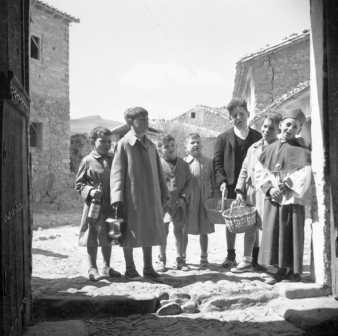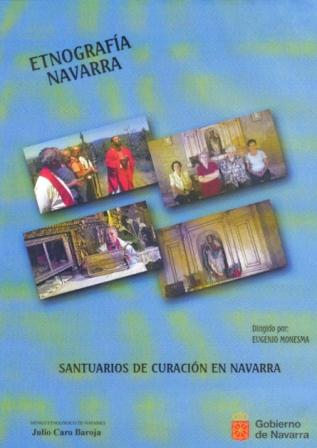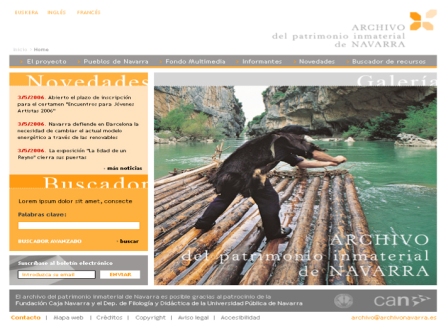18 March
lecture series
DISSEMINATION AND COMMUNICATION OF CULTURAL HERITAGE
Intangible Heritage
D. Alfredo Asiáin Ansorena
Director technician at filedel Patrimonio Inmaterial de Navarra. Public University of Navarra
In order to familiarise those present with a concept with a relatively short history (2003), the National Plan for the Safeguarding of ICH (2011) was used to provide a definition of the concept ("any living cultural manifestation associated with shared collective meanings and rooted in a community"), to characterise it and to delimit its areas of manifestation.
The dangers or risks of ICH (paralysis, loss of specificity, usurpation...) were then listed, associating them with the criteria for action, promotion and dissemination that the administrations should promotein order to safeguard them.
One of these major dangers was the difficulty of transmission, reference letter. In this context, the need for heritage Educationwas addressed, as a necessary mediation to intervene in the processes of "construction" of cultural heritage. In this sense, the need to promote transmission while respecting the evolution of people, events and cultural manifestations was stressed.
It was recalled that mediation is closely related to important values for sustainable developmentand that it affects both the legislation and managementassociated with cultural diversity and the heritage Education.
Within the latter, dissemination and didactics of heritage were differentiated. It was seen that dissemination (scientific dissemination and dissemination to the general public) has a propagation or extension function, but that it is not only communicating information, but also stimulating, making people think, provoking emotions and engaging society. At final, which consists of providing the means and instruments for cultural heritage to be appreciated, respected and enjoyed, heritage education is a construction of knowledgeand meaning, not mere transmission. As opposed to dissemination, which focuses on the cultural event and its values, it is concerned with the learner, in formal, non-formal and more informal contexts. To this end, it uses a wide variety of resources and technologies that enable the situated knowledgeand the mobile knowledge, with which the staffand digital learning environment (PLN) has increased in recent decades.
After this brief explanation, experiences where these concepts were visible were highlighted. As relevant examples on a national scale, the experience of the Pusol School Museum (Elche), declared by UNESCO as an example of good practice in ICH, the Observatory of EducationPatrimonial in Spain (OEPE) of the University of Valladolid and several initiatives in which ICH and natural parks are related were chosen. As examples in Navarre, it was decided to present, firstly, the collection of documentaries that CRANA and businessLABRIT have made on the rivers of Navarre and some images of one of them, "Yo, el Bidasoa / Ni Bidasoa" (I, the Bidasoa / Ni Bidasoa). Secondly, the didactic mediation workon the "Cancionero - Kantutegia" (Songbook - Kantutegia) was shown, which is being carried out by the Chairof the fileof the immaterial heritage of Navarre.

Nicolás Ardanaz, Cuestación por San Nicolás, 1959.
Photo: Museum of Navarre
This was followed by an overview of ICH initiatives undertaken by public administrations at knowledge dissemination.
Firstly, those promoted by the National ICH Safeguarding Plan (2011 onwards) were shown. For example, the monographic publication of the magazine Patrimonio Cultural de España, Nº 0, dedicated to "El Patrimonio inmaterial a discussion" (2009); the recent publication of the Atlas del cultivo tradicional del viñedo (2008-2015); the holding of the meetingof ICH protagonists in Madrid in 2013; the publication of teaching units on ICH in 2013; and the assembly of the travelling exhibition"Inmaterial: patrimonio y reportcolectiva" in 2014.
Focusing on Navarre, a summary was given of the ICH dissemination initiatives carried out by the Ethnological Museum "Julio Caro Baroja". They recalled the recordings on childhood (2007), the articles and monographs of the journal Cuadernos de Etnología y Etnografía de Navarra dedicated to this topic, the temporary exhibition"Navarra en la mirada de Julio Caro Baroja" (2014-2015) and, above all, the extraordinary collection of documentaries that, since 2001, has been made at partnershipwith the Editora Pyrene de Huesca (Eugenio Monesma). Mention was also made of other dissemination initiatives from administrative units of the Government of Navarre outside the Museum, such as the thematic routes of the General Administrationde Turismo (pelota, witchcraft...) and, especially, the Mediateka del euskara en Navarra of Euskarabide - high schoolNavarro del Vascuence.

Ethnography of Navarre. Healing Sanctuaries in Navarre
Documentary video edited by Pyrene in collaboration with the Ethnological Museum of Navarre "Julio Caro Baroja". Government of Navarre
Subsequently, after the initiatives of the administrations, a review was made of the main experiences and projects that have been carried out in Navarre in other public and private institutions in the field of CIP. Special emphasis was placed on the knowledge disseminationand educational mediation materials published and/or edited.
Specifically, the case of the file del patrimonio inmaterial de Navarra - Nafarroako ondare ez-materialaren Artxiboa of the departmentde Philologyy Didáctica de la languageof the UPNA was explained. A brief review was made of the work carried out over the last ten years and a brief presentation was given of the future lines of workon the documentation, research, dissemination and Educationof the ICH, based on the use of new technologies. In relation to this project, the extraordinary trajectory of the specialised businessLABRIT PATRIMONIO and its outstanding collection of documentaries and heritage dissemination materials were praised.

Web page of the fileof the Intangible Heritage of Navarre
Public University of Navarra
With regard to written production, in addition to the works of reference letterof groupÉtniker, the very recent book by Sara González Cambeiro and Mª Ángeles Querol (Complutense University of Madrid) and the online publication of Chairfile of the immaterial heritage of Navarre by the UPNA were highlighted. Mention was also made of the main publications of the Government of Navarre's Publications Fund, the books published by publishing houseLamiñarra in recent years and some important books published by publishing housePamiela. Finally, the books by Maite Mauleón and Mónica Aznárez were mentioned, as well as the edition of the Cancionero vasco en Navarra by Txema Hidalgo "Kapare".
The lectureconcluded with the affirmation that all ethnological heritage has an immaterial dimension and is within the field of study of the ICH, although there are areas where this immaterial dimension is stronger. It was noted, however, that the correspondence between the two is not exact, since not everything intangible is ethnological (a liturgy, for example).
